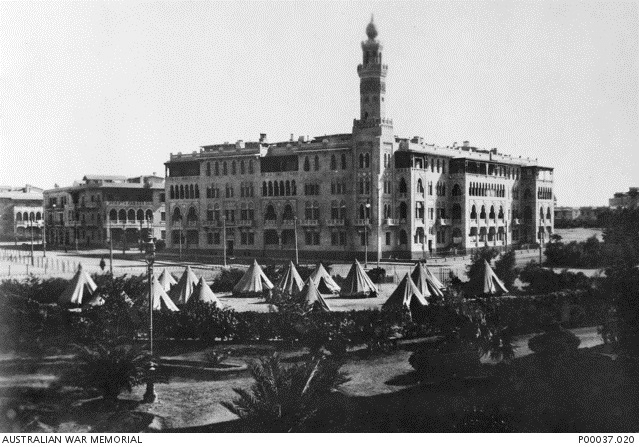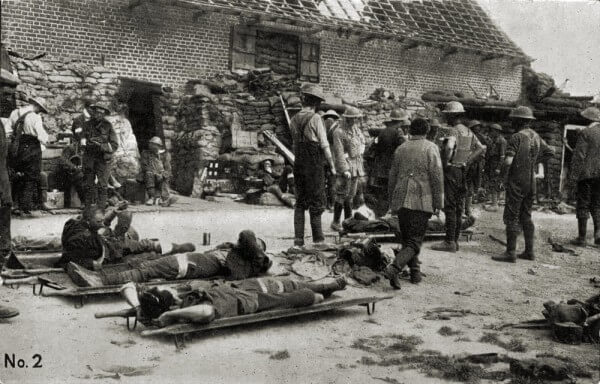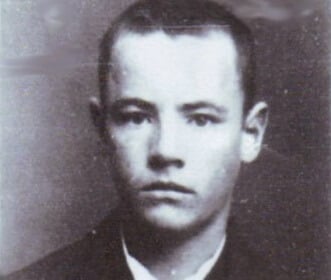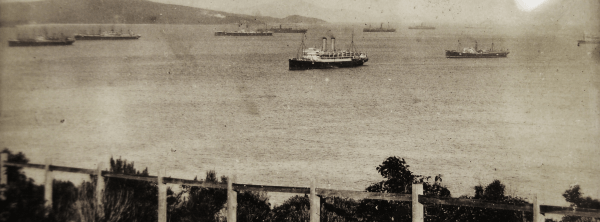
DOCTORS AT WAR
Image: Heliopolis Palace, Egypt. c. 1916. Elevated view of approximately fifteen tents occupied by 1st Australian General Hospital (1AGH). The tents were erected in the grounds as space inside the building became scarce.
 Battle of Messines, Anzac Field
Battle of Messines, Anzac Field
Dressing Station, June 1917
The Great War 1914-1918 had a profound impact on Australian medical staff. The experience of doctors was often terrible, most were accustomed to stable and well resourced civilian hospitals.
Arthur Ross Clayton was a surgeon at the Adelaide Hospital in 1903. But in 1912 he joined the Australian Army Medical Corps as Regimental Medical Officer to the 24th Light Horse.
Captain Clayton served at Heliopolis in Egypt and on the Somme in 1916 as part of 6th and 7th Field Ambulances. He was Mentioned in Dispatches in October 1918 and received the Distinguished Service Order in November 1918.
The conditions at Adelaide Hospital and those in a field hospital in the Great War were worlds apart. At the front there were no antibiotics and only limited surgical techniques. The most feared injuries were facial wounds and plastic surgery techniques were barely available.
Captain Clayton was among the medical officers of the Great War remembered by the Army Health Services Research Group at the Army Museum of South Australia. The Museum was granted $6,000 by the Department of Veterans’ Affairs to publish the stories of South Australian doctors who served in the war.
Anzac Surgeons, in particular, had to treat terrible physical wounds, and later found themselves out of their depth following an epidemic of influenza at Gallipoli. Soldiers evacuated from the fighting were loaded aboard barges and transferred to waiting hospital ships for care and surgery.
The Royal Australasian College of Surgeons also received a $10,140 grant from the Department of Veterans’ Affairs to mark the Anzac Centenary. Its grant was used to hold an exhibition that recreated a scene of Australian surgeons at work during the Gallipoli Campaign. The exhibition ran from 24 April 2015 until 30 June 2015 at the Royal Australasian College of Surgeons’ Museum in Melbourne.
The College published a book showing the enormous challenges our surgeons faced treating sick and wounded at ANZAC Cove and on the Western Front.
A century on medical staff, including general practitioners and surgeons, are being recognised for their vital service to the nation a century ago.













